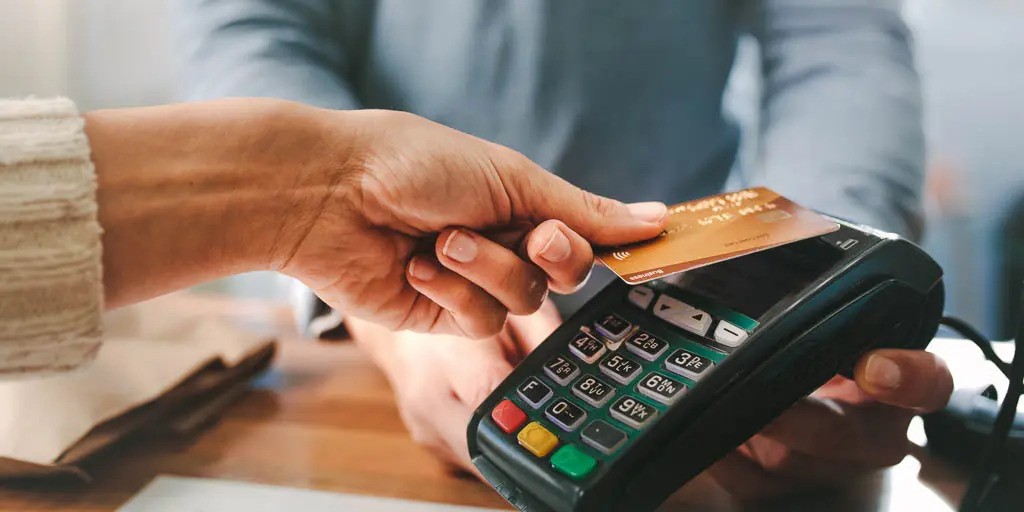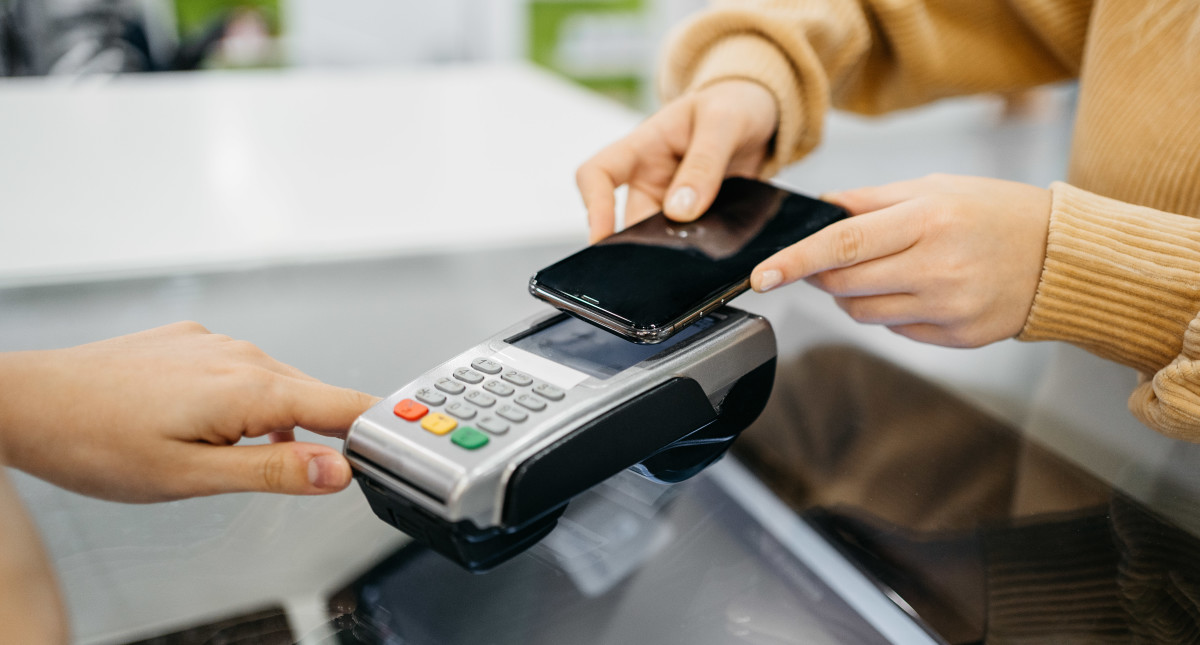Contactless Payments - Exploring The Benefits In A Digital Era
Contactless payments is a revolutionary new payment system that has emerged in the modern digital age. This remarkable technology has revolutionized the way we manage transactions, providing a safe and easy substitute for older forms of payment.
Author:James PierceReviewer:Alberto ThompsonJan 05, 202461 Shares60.8K Views

Contactless paymentsare a revolutionary new payment system that has emerged in the modern digital age. This remarkable technology has revolutionized the way we manage transactions, providing a safe and easy substitute for older forms of payment. Let's explore the world of contactless payments and all the ways they help modern life.
What Is A Contactless Payment?
Contactless payments revolutionize financial transactions, allowing customers to make purchases by bringing a security token near the vendor's point of sale (POS) reader. Common security tokens for this method include chip-enabled bank cards and smartphone digital wallet apps.
Termed as touch-free, tap-and-go, or proximity payments, contactless payments facilitate a frictionless checkout experience when buying goods or services. The process enhances security, as customers avoid directly sharing billing or payment information with the vendor.
Instead, all communication is encrypted, and each purchase is tokenized with a unique, one-time transaction number. Even if a wireless transmission is intercepted, attackers only gain access to the one-time code used for a specific transaction.
Due to a consumer preference to avoid direct contact with other people while making in-store purchases, the adoption of contactless payments saw a significant increase during the COVID-19 pandemic. The U.S. Payments Forum and EMV, named after the organizations Europay, Mastercard, and Visa, play a pivotal role in establishing technical standards for smart payment cards and corresponding POS readers.
History Of Contactless Payment
Only a small number of retailers and merchants initially adopted contactless payment technology when it first emerged in the 1990s. Thousands of international banks, credit card companies, and retailers have adopted it over time as a widely used method.
In 1995, Seoul's transit authority in South Korea introduced one of the first instances of contactless payment. Known as UPass, this early system allowed riders to swiftly and easily pay for bus trips using contactless technology. In 1997, Mobil introduced Speedpass, one of the first contactless payment systems, enabling customers to pay for gas using a special fob loaded with cash at participating gas stations.
The popularity of contactless systems soared in the United Kingdom following the implementation of London's prepaid contactless Oyster Card for transit riders on the Underground. In 2014, the transit agency expanded options for commuters by allowing the use of contactless credit and debit cards on the transit system.
Contrastingly, the adoption of contactless payment in the United States has been comparatively slow. According to a 2018 report from consultancy firm A.T. Kearney, around 20% of transactions in Australia, Canada, South Korea, and the United Kingdom are conducted using contactless methods, while Americans still heavily rely on physical cash, accounting for almost 50 billion transactions annually, or 26% of all consumer payments. The American market's fragmentation, with a diverse range of retailers and banks, contributes to this slower adoption rate.
How Do Contactless Payments Work?
Contactless payment cards and authorized mobile devices come equipped with an embedded RFID microchip, transponder, and antenna. When making a purchase, the customer needs to be near the vendor's reader.
Contrary to processing or authorizing transactions, neither Apple Pay nor Google Pay tokenizes the shopper's payment card and simply forwards that information to the relevant credit card network.
In contactless payments, the microchips generate new verification values with each use of a card or authorized device in a transaction. This differs significantly from the data transmission of magnetic stripe cards.
Traditional magnetic cards transmit the customer's billing information to the card reader every time the card is swiped, exposing the data to potential interception and misuse, perhaps on the dark web. In wireless transactions, the only information vulnerable to interception is the unique authentication code specific to that particular transaction.
The generation of a new code with each use of a chip card makes it highly challenging for thieves to clone the card for fraudulent purchases. The dynamic authentication technology cannot be replicated to produce the same dynamic codes as a valid chip card. Also, smartphones enhance security for contactless payments by incorporating methods such as facial recognition to authenticate the user's identity, adding an extra layer of protection.
Types Of Contactless Payment
Contactless Payment Cards
The majority of tap-to-pay transactions involve the use of contactless debit or credit cards. These cards are equipped with an embedded chip that transmits the card information to a payment terminal. Most recently issued credit cards from major providers like Visa, Mastercard, and American Express are likely to include this chip technology.
Mobile Wallet Payments
Mobile wallet payments are executed through mobile devices such as iPhones or Android phones, as well as through wearable devices like the Apple Watch. To facilitate these transactions, the devices must run a payment app, such as Apple Pay, Google Pay, or Samsung Pay.
Wearables
Wearables are devices worn on the body that incorporate NFC technology. For instance, with an Apple Watch, you can make payments with a contactless reader using the information stored in your Apple Pay mobile wallet. By double-clicking the side button, choosing the desired card, and holding the watch close to the terminal, it is possible to authenticate the transaction without using a physical card or mobile device.
What Is A Contactless Card?
Near-Field Communication (NFC) or RFID contactless cards make transactions quick and secure by doing away with the need for physical contact between the card and the terminal. Making payments with contactless credit cards is a simple process, involving a quick tap or wave of the card close to the terminal.
Identifiable by a contactless symbol, these bank cards convey to the cardholder that they are compatible with contactless readers, offering a convenient and efficient payment option.
Are Contactless Cards Safe?
Contactless credit cards currently stand out as one of the most secure payment methods available. The generation of a unique one-time code for each transaction makes it highly challenging for hackers to recreate, setting contactless credit cards apart from the more easily duplicated magnetic strips.
While the physical theft of a contactless credit card poses a potential threat, the need for signatures is often eliminated in contactless transactions. Despite this, card issuers have developed sophisticated fraud detection systems, increasing the likelihood of promptly flagging and refunding any fraudulent charges. It remains essential for cardholders to proactively contact their issuer upon card theft or the detection of suspicious activity.
Beyond security benefits, contactless payments offer a more attractive option compared to traditional methods like swiping cards or entering a PIN. By reducing physical contact with card terminals, contactless technology contributes to minimizing the spread of bacterial or viral diseases, making it a desirable choice in today's health-conscious environment.
Security Features Of Contactless Payments
- Encryption -Contactless payments employ encrypted data transmission, ensuring that only authorized parties can access the information. The use of unique codes during transactions enhances security, making data interception or reuse challenging.
- Tokenization -Contactless payments often utilize tokenization, where sensitive cardholder data is replaced with random tokens. As these tokens are single-use, intercepting them proves futile, enhancing overall security.
- Transaction limits -To prevent unauthorized transactions, contactless payments typically impose transaction limits. For transactions exceeding a specified threshold, users may be required to enter a PIN or provide a signature, depending on regional and issuing bank policies.
- No physical contact -The absence of physical card handover or insertion into a terminal reduces the likelihood of skimming, a method involving the unauthorized copying of card data using compromised devices.
- Two-factor authentication -Many contactless payment methods incorporate two-factor authentication, requiring additional verification such as fingerprints or facial recognition, adding an extra layer of security.
- Zero-liability policies -Numerous banks and card issuers offer zero-liability policies, safeguarding cardholders from unauthorized transactions. In cases of fraudulent transactions, cardholders are typically not held liable, providing an additional level of financial protection.
Benefits Of Contactless Payments
Beyond enhancing security, contactless payments contribute to faster checkout processes. These transactions are quicker than standard credit card payments and more efficient than cash transactions, making them particularly suitable for micropayments and low-value purchases.
The efficiency of contactless payment methods extends to public transportation turnstiles, parking garage checkout terminals, and road tolls, increasing throughput in these areas. While the time saved per individual transaction may be minimal, the cumulative effect significantly reduces the overall time customers spend waiting in lines.
As the acceptance of contactless payment technology grows, unconventional banking institutions and third-party payment providers like PayPal are exploring ways to further streamline the checkout experience. Some providers utilize GPS technology to assist mobile customers in locating ATMs, while others offer opt-in options for loyalty promotions through targeted geofenced campaigns, enhancing the overall frictionless checkout process.
Advantages And Disadvantages Of Contactless Payment
The vulnerability of magnetic stripes on payment cards to theft and cloning by fraudsters poses significant risks, leading to fraud and identity theft. Contactless payment methods effectively mitigate these risks by providing enhanced security for both consumers and merchants. Unlike magnetic stripes, information transmitted through contactless payment at merchant terminals is encrypted, making it challenging for malicious actors to intercept and steal.
Despite these security measures, criminals can still attempt to skim cards in consumers' wallets using smartphones for reading. However, the limited range at which a card can be read, coupled with the inability to create a copy of the card, sets contactless payments apart from traditional magnetic stripe cards. Nevertheless, chip and PIN cards remain the most secure, as they cannot be duplicated and require data not present elsewhere on the card.
In the event of fraudulent transactions, consumers can now dispute charges and obtain replacement cards. Protective measures such as card sleeves and wallets that block unauthorized readers from accessing card data add a layer of security. Since 2015, merchants and credit card companies have assumed liability for fraudulent activities occurring through their systems if they lacked chip technology.
Examples Of Contactless Payment
Contactless payment options are not limited to traditional banks; various companies have embraced this technology, offering their own versions of contactless payment services. For example, Google and Android introduced their payment systems in 2011, leveraging NFC technology, while Apple joined the landscape with its digital wallet, Apple Pay, in 2014.
Apple Pay
Apple devices, such as iPhones and iWatches, come pre-equipped with the Apple Wallet app, enabling users to securely store credit and debit card information for in-store purchases. Additionally, the system supports online transactions and purchases through various apps. Apple Pay extends its functionality to include the ability to send money to friends and family using the text messaging system.
Google Pay
Google provides users with the capability to make secure payments at both physical and online retailers through the Google Pay app. Instead of transmitting the actual credit card number, Google shares an encrypted number linked to the user's payment card with the retailer. Similar to Apple Pay, Google Pay facilitates money transfers between users through email addresses or phone numbers.
Samsung Pay
Samsung has introduced its digital wallet, Samsung Pay, offering users the convenience of storing their payment card details within the app for use at merchant terminals. Beyond basic payment functionality, Samsung Pay enhances the user experience by providing opportunities to earn cashback and other rewards when making purchases using their phones. The process involves users capturing a photo of their card or barcode and simply tapping to complete the checkout process.
Contactless Payments - FAQ
How Do I Receive Money From Contactless?
To accept contactless payments, your phone needs to be compatible with near-field communication (NFC) technology. You can read more about NFC technology here. You'll need to set up a Stripe account. You can get started by tapping on 'Get set up' under 'Accept card payments' in the 'Get Paid' tab in your mobile app.
How Do I Know If My Card Is Contactless?
You can tell whether your credit or debit card can make contactless payments if it has the contactless symbol. You can find the contactless symbol on the back of your card. The contactless symbol is four curved waves and looks similar to the Wi-Fi symbol.
What Is The Symbol For Contactless Pay?
The contactless symbol is four vertical, curved lines that get bigger from left to right - like the Wi-Fi symbol turned on its side.
How Long Does Contactless Take?
Contactless payments are mostly made offline so that the issuing bank is notified later. This means that contactless payments take longer to clear. Payments won't show up right away; they'll only appear once the merchant has processed the payment. This can take a while, even as long as a few days.
Conclusion
The use of contactless payments stands out as a sign of safety and ease in this digital age. As we move through a world driven by technological advances, contactless payments are changing the way we do business with money because they are so easy and quick. The rise of contactless payments, which are faster, safer, and cleaner, is an example of how new ideas are shaping our constantly changing digital world.
Jump to
What Is A Contactless Payment?
History Of Contactless Payment
How Do Contactless Payments Work?
Types Of Contactless Payment
What Is A Contactless Card?
Are Contactless Cards Safe?
Security Features Of Contactless Payments
Benefits Of Contactless Payments
Advantages And Disadvantages Of Contactless Payment
Examples Of Contactless Payment
Contactless Payments - FAQ
Conclusion

James Pierce
Author
James Pierce, a Finance and Crypto expert, brings over 15 years of experience to his writing. With a Master's degree in Finance from Harvard University, James's insightful articles and research papers have earned him recognition in the industry.
His expertise spans financial markets and digital currencies, making him a trusted source for analysis and commentary. James seamlessly integrates his passion for travel into his work, providing readers with a unique perspective on global finance and the digital economy.
Outside of writing, James enjoys photography, hiking, and exploring local cuisines during his travels.

Alberto Thompson
Reviewer
Alberto Thompson is an acclaimed journalist, sports enthusiast, and economics aficionado renowned for his expertise and trustworthiness. Holding a Bachelor's degree in Journalism and Economics from Columbia University, Alberto brings over 15 years of media experience to his work, delivering insights that are both deep and accurate.
Outside of his professional pursuits, Alberto enjoys exploring the outdoors, indulging in sports, and immersing himself in literature. His dedication to providing informed perspectives and fostering meaningful discourse underscores his passion for journalism, sports, and economics. Alberto Thompson continues to make a significant impact in these fields, leaving an indelible mark through his commitment and expertise.
Latest Articles
Popular Articles

